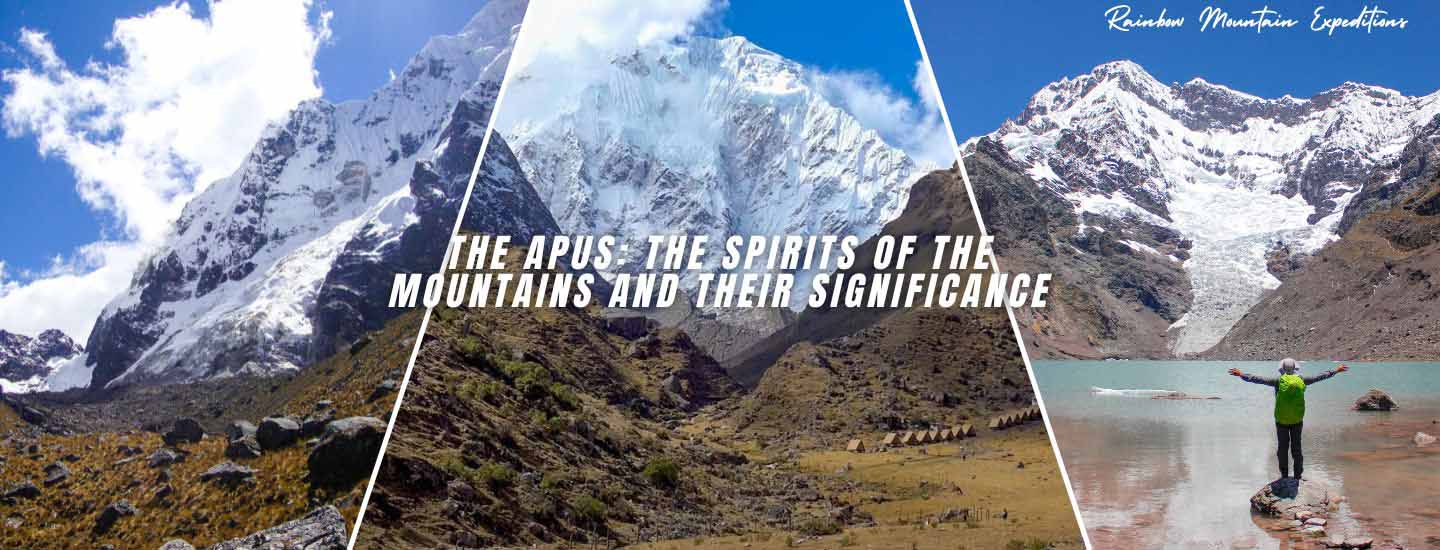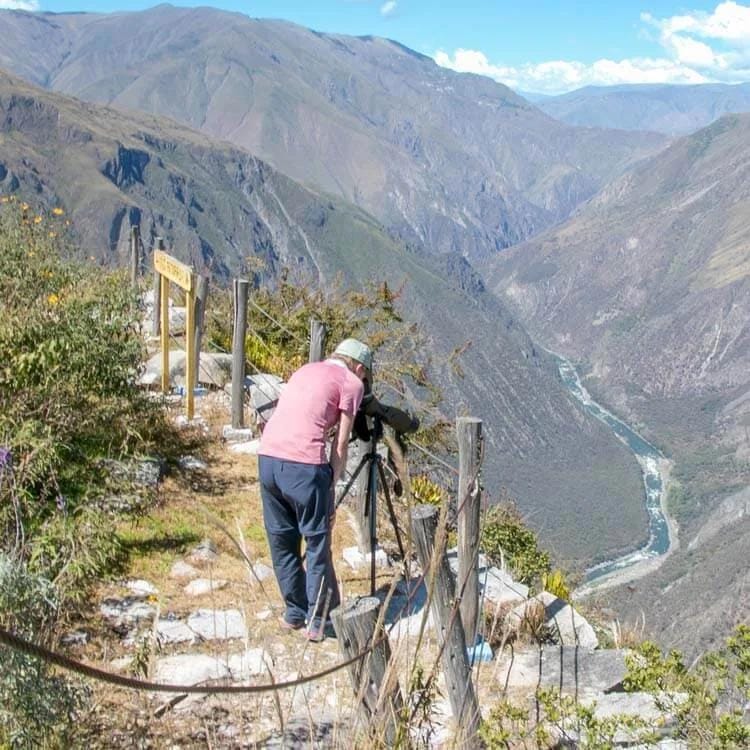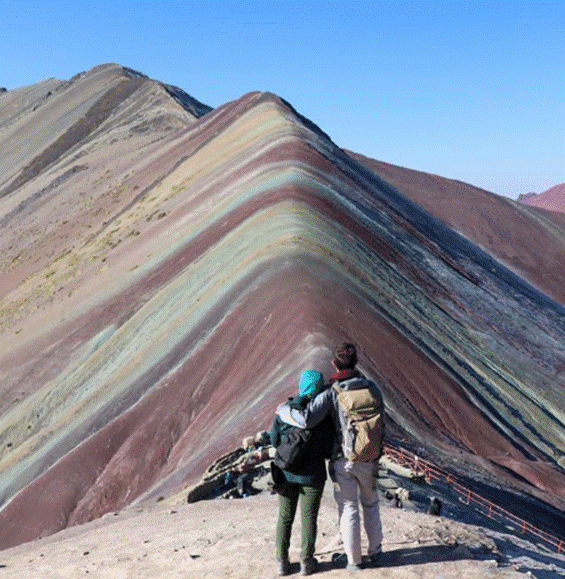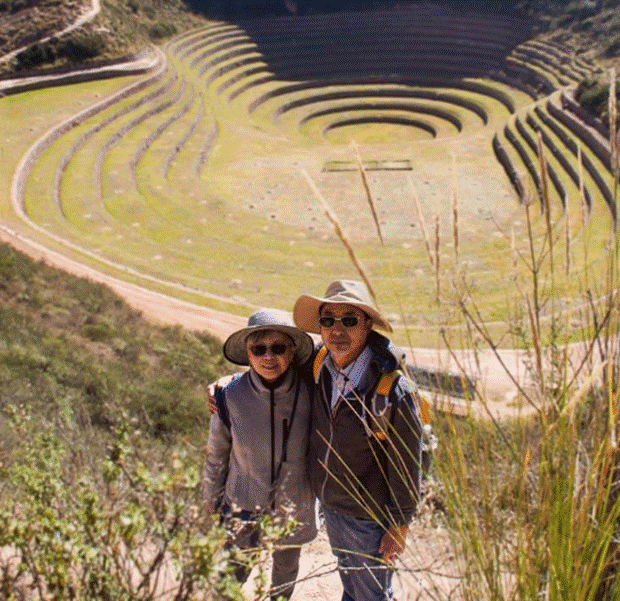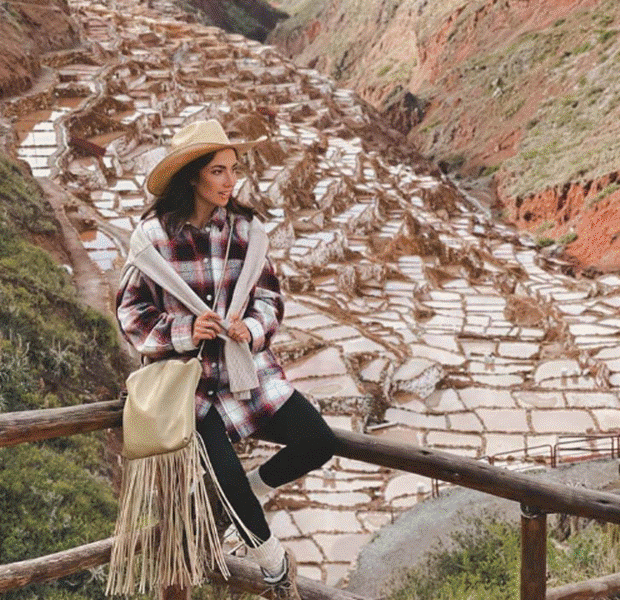The Apus and Their Significance in Andean Culture in Peru
Apus have been and continue to be an essential and important part of the Andean worldview. These sacred mountain spirits are revered and respected by the indigenous communities of the Andes. In this article, we will delve into the meaning of the Apus, their cultural importance, and the ways in which they are honored in daily life.
What are the Apus?
Apus are considered guardians and protectors of the mountains and life. The word “Apu” in Quechua translates to “lord” or “god.” These spirits are seen as powerful beings that govern the mountains and have the ability to influence people’s lives.
In ancestral stories, some have had direct connections with the Apus, describing them as masculine spirits with various professions and the ability to speak fluently in Spanish and Quechua. According to the Andean worldview, each region has its own Apu that cares for and protects the area. Among the most recognized Apus in the Cusco region are Apu Salkantay and Apu Ausangate, considered the tutelary spirits.
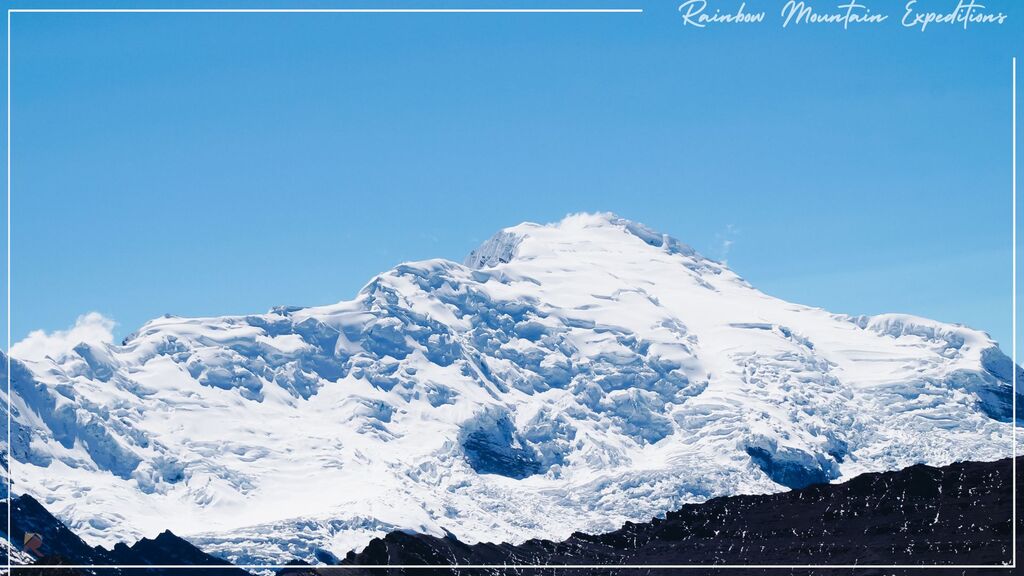
Who Could Communicate with the Apus?
Shamans, known as alto misayoc, were the ones who could communicate with the powerful Apus. Through this connection, they sought to receive advice and ensure everything went well in their communities. Additionally, the Apus had the power to heal spiritual illnesses. Today, although shamans still exist, few possess the ability to communicate with these ancestral spirits.
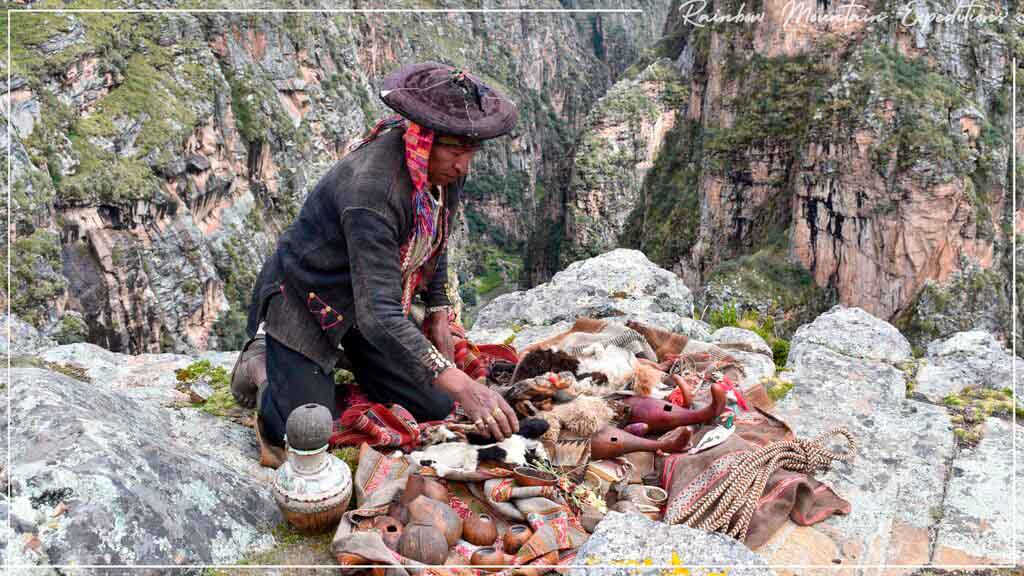
The Relationship Between the Apus and the Mountains
Each mountain and Inca construction in the Andes has its own Apu. These spirits not only protect the mountain itself but also the communities living around it. A clear example is the Cusco region, situated between two significant Apus: Apu Salkantay and Apu Ausangate.
An interesting fact is that the Incas built their fortresses in strategic locations based on the presence of one or more Apus. They didn’t build randomly; they first observed the presence of these protective spirits. If you’ve noticed, every Inca site has the presence of an Apu. For instance, Machu Picchu is protected by Apu Salkantay, and Rainbow Mountain is under the protection of Apu Ausangate.

Moreover, the Apus are responsible for the fertility of the land, the climate, and the provision of natural resources. Their influence is vital for the sustenance and well-being of the Andean communities and those who seek their help.

The Importance of the Apus in Andean Life
Ceremonies
Ceremonies dedicated to the Apus are common in Andean communities. One of the most well-known rituals is the “payment to the earth” or “despacho,” where a variety of items such as chicha de jora, coca leaves, and food are offered to the Apus to ask for protection and prosperity. These rituals, conducted by shamans (alto misayoc), aim to give thanks, ask for blessings, and maintain balance and harmony with nature.
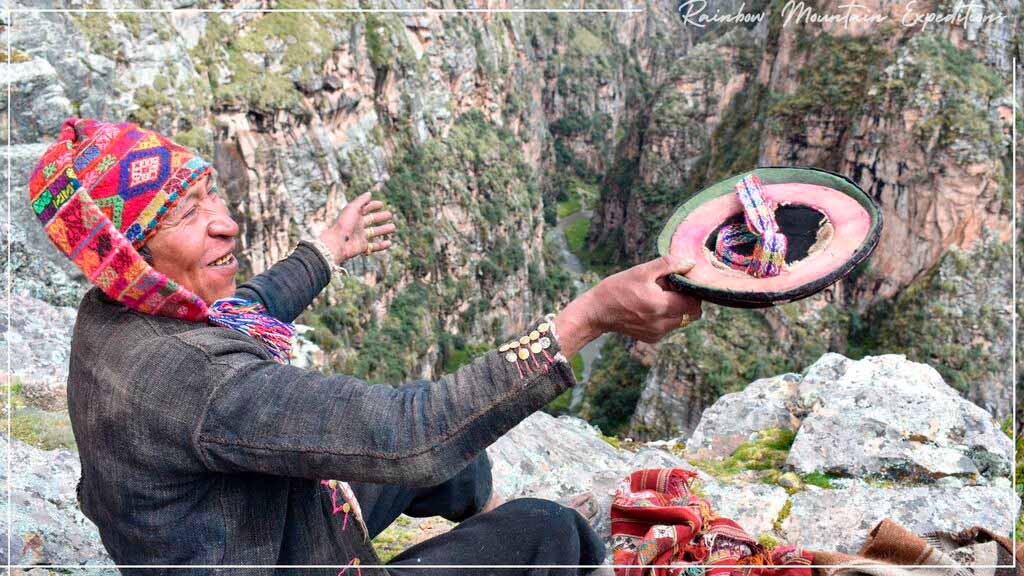
Celebration and Rituals
The celebration of this day includes a ritual of “payment to the earth,” performed with coca leaves, chicha de jora (a fermented drink), and foods produced by Pachamama herself. This act of offering is a demonstration of respect and gratitude towards the earth, seeking to maintain balance and harmony with nature, thereby ensuring the prosperity and well-being of the community.

August 1st: Day of Mother Earth and the Apus
August 1st is a very important day for both Mother Earth (Pachamama) and the sacred spirits (Apus), as it marks the Central Day of Mother Earth. This month is especially sacred for farmers and the wise men who work with the land, known as shamans or alto misayoc. This date aims to receive Pachamama’s blessing to ensure fertile lands and a good harvest, maintain balance and harmony with nature, and achieve success in their work.
Apus in Modern Times
Spiritual Tourism
Today, many tourists visit the Andes not only for their natural beauty but also to experience Andean spirituality. The “payment to the earth” ceremonies have become a tourist experience, allowing visitors to participate and learn more about these ancient traditions. Being part of these activities offers an authentic insight into the spiritual connection that Andean communities have with their environment.
Interesting Fact and Advice
If you are about to embark on a hike to any attraction in the Andes, it is important to make a small “payment to the earth” with three coca leaves. You do not need to eat or chew the leaves; instead, blow in the direction of the Apus while mentioning the tutelary Apus of the area. You can say a phrase like this: “Guide me and ensure everything goes well on my hike or activity.” If you do not know the tutelary Apus of the area, ask your guide, who will surely know. Once finished, place a small stone or rock over the leaves, and you will notice that everything goes well, and you will not feel tired or affected by altitude sickness during your hike or experience.

Conclusion
Apus represent a deep connection between people and nature in Andean culture. Honoring them through rituals and ceremonies is not only a show of respect but also a way to keep an ancient tradition alive. When visiting the Andes, it is essential to take a moment to learn about and participate in these practices that were once also performed by the Incas.
Related Posts:
Ausangate Mountain: The Most Important Sacred Mountain
The Inca Royal Road: What You Didn’t Know About the Qhapaq Ñan
Legends and Myths of the Origin of the Inca Empire
Rainbow Mountain Communities: Traditions and Customs
Ausangate Mystical Tourism: Everything You Need to Know
Salkantay Trek to Machu Picchu: Things to Know for The Best Trek

